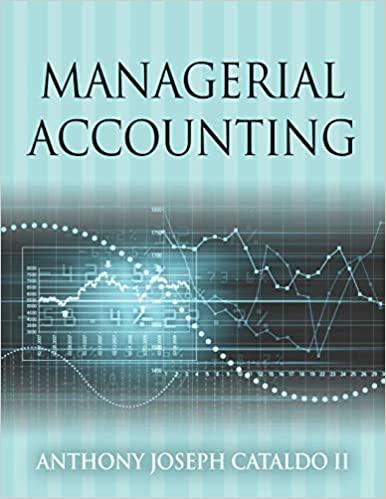this is from In my space astronomy class I really need help with this lab also plz explain.

DISTANCE cm m BRIGHTNESS BRIGHTNESS foot-candles lumens/m AREA m LUMINOSITY lumens 2. 5 7 10 15 20 25 30 35 40 Average Luminosity Is the average luminosity you measured within the manufacturer's range of 440-490 lumens? If it is not, suggest an explanation for the deviation. 800 In the graph at right, plot the BRIGHTNESS in lumens per meter squared versus the DISTANCE in meters. 700- 600 500 Draw a smooth curve that represents the relationship between brightness and distance. BRIGHTNESS (LUMENS PER METER SQUARED) 400 300 200 The curve you drew depicts a relationship known as the Inverse Square Law. More on this relationship is discussed on the next page. 100 0 0 0.40 0.05 0.100.150.200.250.3003 DISTANCE (METERS 674 Star No.m p(") dipe) Star No. m p(") d(pe) Star No. m p" dpe) Star No. m p") dpe) The first 551 11.1 0.77 1.3 905 12.3 0.32 B45A 4.7 point 0.28 35 12.40.23 has been 559A 0 0.75 144 3.7 0.31 1111 14.80.28 473A 132 0.23 plotted 5598 1.3 0.75 887 7.3 0.30 71 3.5 0.27 9.4 0.22 699 9.5 0.55 447 11.10.30 1061 13.0 | 0.27 440 11.5 0.22 406 13.40.42 866C 14.0 | 0.29 191 8.8 0.26 380 6.6 0.21 411 7.5 0.39 280A 0.4 0.29 860A 9.8 0.25 166A 4.4 0.20 244A -1.4 0.38 2806 10.7 0.29 860B 11.4 0.25 1668 9.5 0.20 2448 8.4 0.38 8208 6.0 0.29 2340 14.20.24 1005B 14.3 0.19 658 13.0 | 0.37 725B 9.7 0.28 528 10.1 0.24 251 10.00.18 -2.0 Does the graph you made at left resemble the one you made on 0 page three? 2.0 Recall that the graph on page three depicts an inverse square 4.0 relationship, namely, that brightness depends on the inverse 6.0 distance squared 8.0 What can you conclude from 10.0 these two graphs? BRIGHTNESS (apparent magnitude) 12.0 0 4.0 14.0 Should brightness be used as a 16.0 good indicator of a star's 1.0 2.0 3.0 5.0 6.0 7.0 8.0 distance? DISTANCE (parsecs) Part 3: Variable Stars and the Period-Luminosity Relationship A star that undergoes a periodically changing luminosity is called a variable star. One type of yellow variable star is called a classical Cepheid variable. Early in the previous century an important discovery was made by Henrietta Swan Leavitt concerning these stars - their periods of pulsation were related to their average luminosities. Because a Cepheid variable can be identified by its period, its average luminosity can be easily determined. By comparing the average luminosity with the Cepheid's brightness, the star's distance can be calculated. The technique is an example of a standard candle method. Cepheids can be used to find the distances of nearby galaxies as well as to uncover characteristics about our galaxy, the Milky Way. DISTANCE cm m BRIGHTNESS BRIGHTNESS foot-candles lumens/m AREA m LUMINOSITY lumens 2. 5 7 10 15 20 25 30 35 40 Average Luminosity Is the average luminosity you measured within the manufacturer's range of 440-490 lumens? If it is not, suggest an explanation for the deviation. 800 In the graph at right, plot the BRIGHTNESS in lumens per meter squared versus the DISTANCE in meters. 700- 600 500 Draw a smooth curve that represents the relationship between brightness and distance. BRIGHTNESS (LUMENS PER METER SQUARED) 400 300 200 The curve you drew depicts a relationship known as the Inverse Square Law. More on this relationship is discussed on the next page. 100 0 0 0.40 0.05 0.100.150.200.250.3003 DISTANCE (METERS 674 Star No.m p(") dipe) Star No. m p(") d(pe) Star No. m p" dpe) Star No. m p") dpe) The first 551 11.1 0.77 1.3 905 12.3 0.32 B45A 4.7 point 0.28 35 12.40.23 has been 559A 0 0.75 144 3.7 0.31 1111 14.80.28 473A 132 0.23 plotted 5598 1.3 0.75 887 7.3 0.30 71 3.5 0.27 9.4 0.22 699 9.5 0.55 447 11.10.30 1061 13.0 | 0.27 440 11.5 0.22 406 13.40.42 866C 14.0 | 0.29 191 8.8 0.26 380 6.6 0.21 411 7.5 0.39 280A 0.4 0.29 860A 9.8 0.25 166A 4.4 0.20 244A -1.4 0.38 2806 10.7 0.29 860B 11.4 0.25 1668 9.5 0.20 2448 8.4 0.38 8208 6.0 0.29 2340 14.20.24 1005B 14.3 0.19 658 13.0 | 0.37 725B 9.7 0.28 528 10.1 0.24 251 10.00.18 -2.0 Does the graph you made at left resemble the one you made on 0 page three? 2.0 Recall that the graph on page three depicts an inverse square 4.0 relationship, namely, that brightness depends on the inverse 6.0 distance squared 8.0 What can you conclude from 10.0 these two graphs? BRIGHTNESS (apparent magnitude) 12.0 0 4.0 14.0 Should brightness be used as a 16.0 good indicator of a star's 1.0 2.0 3.0 5.0 6.0 7.0 8.0 distance? DISTANCE (parsecs) Part 3: Variable Stars and the Period-Luminosity Relationship A star that undergoes a periodically changing luminosity is called a variable star. One type of yellow variable star is called a classical Cepheid variable. Early in the previous century an important discovery was made by Henrietta Swan Leavitt concerning these stars - their periods of pulsation were related to their average luminosities. Because a Cepheid variable can be identified by its period, its average luminosity can be easily determined. By comparing the average luminosity with the Cepheid's brightness, the star's distance can be calculated. The technique is an example of a standard candle method. Cepheids can be used to find the distances of nearby galaxies as well as to uncover characteristics about our galaxy, the Milky Way










